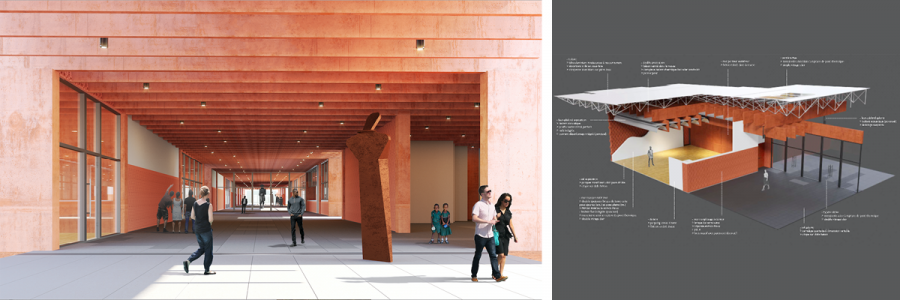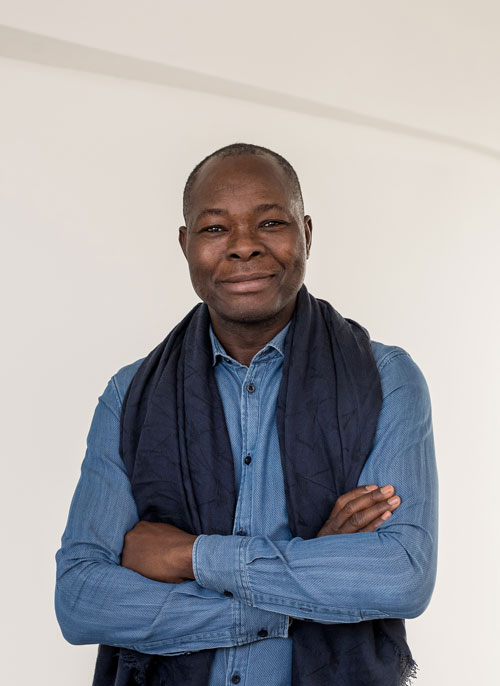Françoise N’Thépé’s museums in Benin
A partner in the firm Beckmann-N’Thépé for over 17 years, Françoise N’Thépé founded Françoise N’Thépé Architecture & Design in 2018. In 2021, she was named as the designer of the new Abomey Museum in Benin which will house objects returned by France, and more specifically by the Musée du Quai Branly.

What do you think contemporary architecture can learn from Africa?
Françoise N’Thépé : Africa has been facing the issues of a challenging climate for ever, and today, given that global warming is affecting all the world’s countries, the technical solutions to manage the issue are collective now. So all eyes are turned towards a new contemporary African architecture, as shown by the 18th Venice Architecture Biennale and its theme, which was “Africa, the laboratory of the future”.
How would you describe your approach?
I prefer to opt for a controlled, local approach which doesn’t eclipse environmental efficacy, and highlight the benefits of prefabrication at the same time. Working on materials is also important to me and I try to bring out the qualities of every material deployed on my projects. I advocate an architecture which is generous and minimal, but expressive.
Could you tell us about two of your firm’s emblematic projects?

Museum of Dahomey Kings and Amazons in Abomey, Benin, in progress.
The first is the Museum of Dahomey Kings and Amazons in Abomey, in Benin, currently in the design phase and due for completion in 2025. The museum is located within the site of the royal palaces of Abomey listed as a UNESCO World Heritage Site, in the “Courtyard of the Amazons”, the former training ground of the palace guards and warriors. The project is a building which ensures the transition from the past to the present and the future.
Its volumes are intentionally simple. Only the variation in heights differentiates the various parts of the programme. Much like auditoriums, the roofs over the different areas form «hats» with discontinuous overhangs that create a dynamic, also providing shade to the paths around the building. The overall physical properties and colour come from the laterite, or ferralitic soil known locally as “terre de barre”, with raw earth, which acts as a thermal regulator, used firstly to fill the compressed earth blocks (or CEB) facades. The earth is also used in a fired form for the roofs (shingles) and, in places, inside the building as mortar.

Museum of Slavery, Resistance and to the memory of Toussaint Louverture, in Allada, Benin, design phase 2018.
The second project is the Museum of Slavery, Resistance and to the memory of Toussaint Louverture, in Allada, and also in Benin, which was unfortunately put on hold in the design phase in 2018. Located on former agricultural land, the morphology of the concept for the museum to honour Toussaint Louverture is intentionally low and spread out over the landscape so as not to disrupt the surrounding equilibrium. The museum symbolises the slaves’ memory and strong roots by using as its basis a mental, physical and temporal pathway.
The whole design is organised around the “Galerie de la Mémoire”, a central axis, and sequenced by a rhythm of solids and voids composed of different volumes and courtyards. The project is unified by a protective element in the form of a huge over-roof, echoing the horizontalness of the landscape. The project’s identity would be enhanced by the considered use of certain materials, architectural through-coloured concrete reminiscent of laterite, which reinforces the link between the vernacular world and the contemporary world, whilst conveying a strong attachment to the soil. Aluminium would be the material of choice for the huge over-roof which unifies the building, and the brick facades would be filled in with burnt clay.

The openwork walls made of clay bricks and the load-bearing concrete walls are topped by a double girder in coloured concrete, covered with riveted aluminium sheeting.

Françoise N'Thépé Architecture & Design is an agency based in Paris. 8 rue Deguerry 75011 Paris, France




